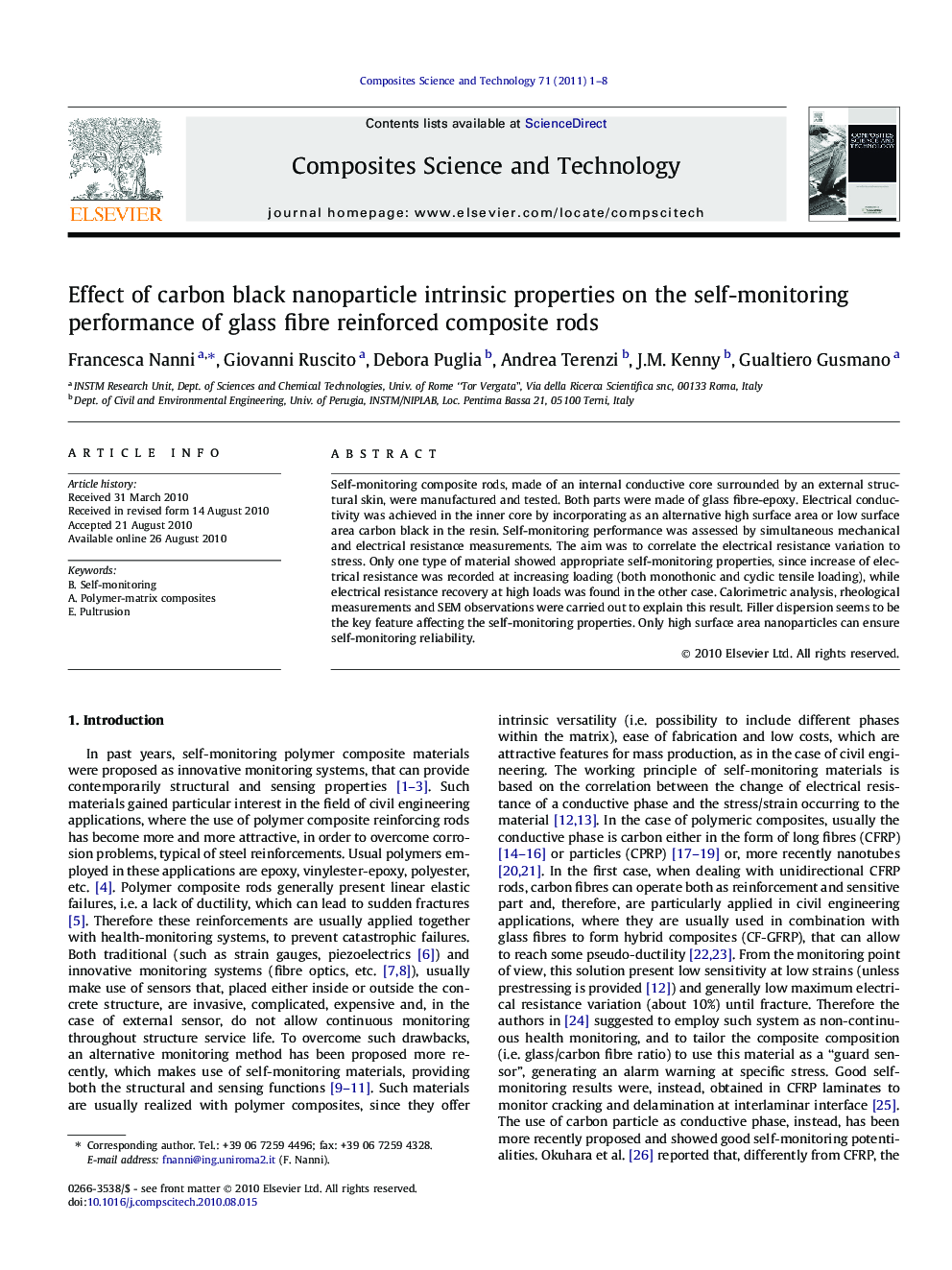| Article ID | Journal | Published Year | Pages | File Type |
|---|---|---|---|---|
| 820834 | Composites Science and Technology | 2011 | 8 Pages |
Self-monitoring composite rods, made of an internal conductive core surrounded by an external structural skin, were manufactured and tested. Both parts were made of glass fibre-epoxy. Electrical conductivity was achieved in the inner core by incorporating as an alternative high surface area or low surface area carbon black in the resin. Self-monitoring performance was assessed by simultaneous mechanical and electrical resistance measurements. The aim was to correlate the electrical resistance variation to stress. Only one type of material showed appropriate self-monitoring properties, since increase of electrical resistance was recorded at increasing loading (both monothonic and cyclic tensile loading), while electrical resistance recovery at high loads was found in the other case. Calorimetric analysis, rheological measurements and SEM observations were carried out to explain this result. Filler dispersion seems to be the key feature affecting the self-monitoring properties. Only high surface area nanoparticles can ensure self-monitoring reliability.
